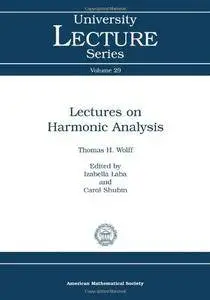Lectures on Harmonic Analysis (University Lecture Series) by Thomas H. Wolff
English | 2003 | ISBN: 0821834495 | 137 Pages | DJVU | 986.53 KB
English | 2003 | ISBN: 0821834495 | 137 Pages | DJVU | 986.53 KB
Thomas H. Wolff was a leading analyst and winner of the Salem and Bôcher Prizes. He made significant contributions to several areas of harmonic analysis, in particular to geometrical and measure-theoretic questions related to the Kakeya needle problem. Wolff attacked the problem with awesome power and originality, using both geometric and combinatorial ideas. This book provides an inside look at the techniques used and developed by Wolff. It is based on a graduate course on Fourier analysis he taught at Caltech. The selection of the material is somewhat unconventional in that it leads the reader, in Wolff's unique and straightforward way, through the basics directly to current research topics. The book demonstrates how harmonic analysis can provide penetrating insights into deep aspects of modern analysis. It is an introduction to the subject as a whole and an overview of those branches of harmonic analysis that are relevant to the Kakeya conjecture. The first few chapters cover the usual background material: the Fourier transform, convolution, the inversion theorem, the uncertainty principle, and the method of stationary phase. However, the choice of topics is highly selective, with emphasis on those frequently used in research inspired by the problems discussed in later chapters. These include questions related to the restriction conjecture and the Kakeya conjecture, distance sets, and Fourier transforms of singular measures. These problems are diverse, but often interconnected; they all combine sophisticated Fourier analysis with intriguing links to other areas of mathematics, and they continue to stimulate first-rate work. The book focuses on laying out a solid foundation for further reading and research. Technicalities are kept to a minimum, and simpler but more basic methods are often favored over the most recent methods. The clear style of the exposition and the quick progression from fundamentals to advanced topics ensure that both graduate students and research mathematicians will benefit from the book.



